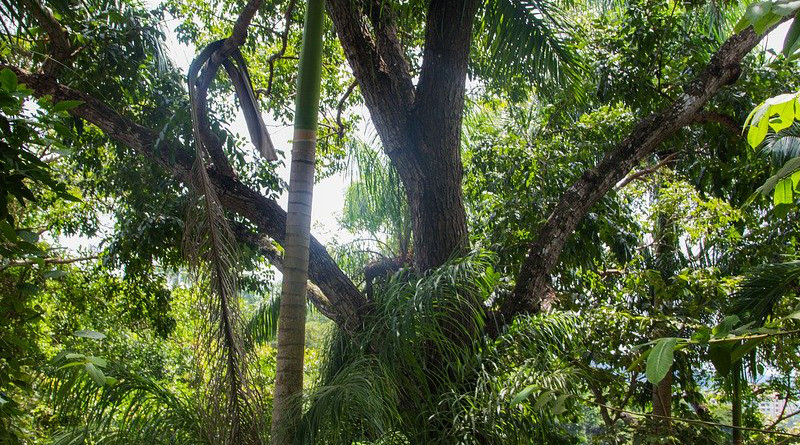Success Stories Brighten Asia’s Bleak Forest Picture – OpEd
Although the record of reforestation is dismal in the Asia Pacific region is dismal, several success stories in the Philippines, South Korea, India and China have kindled new hope among environmentalists and tree growers.
The reason is not hard to find. Many of the projects feature innovative approaches that may find wide use in the world, particularly in developing nations.
In reforestation, South Korea has emerged a model. In just twenty years from 1980 to 2000, the Korean countryside has been transformed to thick forests.
Since 1970, South Korea was a barren, denuded country plagued by soil erosion Its hillsides were eroded, and the land lost most of its water retention capacity. But as of 1977, some 643,000 hectares—roughly half the size of area planted to rice nationwide—had been planted to fast growing trees. The area reforested doubled by 1989.
The success is due primarily due to the organization of federally-linked village forestry associations and the direct participation of villagers in reforestation efforts.
Through the association composed of representatives of each of its households, each participating village plants, tends, and harvests the woodlots without pay.
Harvested wood is distributed among households and the proceeds from any marketable surplus are used to support other community development projects. The program’s primary aim was to bring back the forests to stabilize land and water supply, and the secondary aim, to provide enough firewood to satisfy the fuel needs of all rural communities.
The economic gains were obvious to the villagers: the switch back to local wood supplies means that they can now pocket the 15 percent of their income that they were forced to spend on local coal when firewood became scarce.
The community forestry success story in Gujarat, Western India also bears telling. The state forestry began to observe that existing forest reserves, however skillfully managed, could not satisfy the local firewood needs. In 1970, Gujarat launched a village woodlot forestation program, planting trees in roadside strips, irrigation canal banks, and other state-owned lands. The idea in each case was to let nearby community take responsibility for managing the woodlots.
The United Nations Environmental Program (UNEP) evaluated the program and noted: “The roadside and canal bank plantations did not involve public participation to a degree that social forestry could be achieved but nevertheless, a marked critical psychological turning point was achieved when, seeing thousands of strands of trees arise on what have been desolate grounds, some two million people trooped to the state government begging to be involved in the tree planting program.
In just nine years from 1979-1989, some 17,000 kilometers of Gujarat’s roadway and canals combined were lined with approximately 20 million trees, yearly, four to five million trees were added.
China’s experience may be the most mind-boggling. Through mobilization of massive human labor, its reforestation rate has been increasing from five percent in 1960 to 12.5 percent in 1980. Reforestation and afforestation of wastelands, including deserts are ongoing not only to increase forestland but to prevent desertification, reduce flooding, erosion and siltation and increase lumber supply and fuelwood in the rural areas.
In the Philippines, where through the past years forest depletion was brought about by overexploitation, and mismanaged forest policies, noble reforestation efforts are being spearheaded by private foundations and non-government organizations (NGOs).
One effort by the Aboitiz Foundation in Mindanao reforested 2,000 hectares with two million trees in partnership with the indigenous peoples Matigsalog Lumads in the rebel-infested badlands of Marilog, in Davao del Sur where the Lumads are provided agroforestry skills for livelihood in exchange for planting denuded forest lands.
North of the Philippines in the island of Luzon, the Cordillera Ecological Center raises and plants thousands of trees yearly, mostly pine trees, and spearheads forestation effort with hundreds of volunteers with volunteer groups like A Tree A Day (ATAD). Another is the Haribon-led Road to 2020.
The Philippine government has exerted efforts in bringing back forests in its fast balding hinterlands. But nationally-led forestation programs like the 1990 Asian Development Bank (ADB)- funded National Contract Reforestation Program and the 2002-National Greening Program (NGP) are stained with corruption and failure.
This is a far cry from earlier forestation efforts by the Philippine government like the Program for Ecosystem Management that met success from 1970 to 1978. Today, the rate of deforestation in the Philippines still outpaces the rate of forestation and there exists a backlog of some five million hectares of open and understocked forestland in the country.
But one thing is certain in the experiences of the four countries. Local peoples, private institutions, companies, schools are joining the fray in tree planting.
This trend in forestation is made more urgent by international calls to reduce carbon footprint as no one can underemphasize the value of forests as source of oxygen, main factor in global cooling rather than just a natural resource for lumber or firewood
The forest is man’s primeval source of almost everything, the benefits equally crucial but often intangible, such that not many know that the only way to keep it with mankind starts with a simple treeplanting

